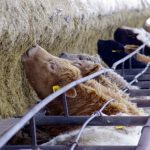
Pasture

Peace Region Living Lab includes learning cluster
The Living Lab, which spans the Alberta and B.C. border, has the potential to create a community of producers interested in trying new things
[Updated Jan. 3, 2023] When most people think of British Columbia, they think of white-capped waves on the Pacific Ocean off the Sunshine Coast, the sweeping, snowy Coast Mountains of Whistler, or trees hung heavy with fruit in the Okanagan. Most people wouldn’t think of a landscape very similar to Alberta, with gently rolling hills […] Read more

NASA to conduct first global water survey from space
Data would bolster weather and climate forecasts
Los Angeles | Reuters — A NASA-led international satellite mission was set for blastoff from southern California early on Thursday on a major Earth science project to conduct a comprehensive survey of the world’s oceans, lakes and rivers for the first time. Dubbed SWOT, short for Surface Water and Ocean Topography, the advanced radar satellite […] Read more

Feeding cows for fertility
The right vitamin and mineral package, and high-quality forage, can boost a herd’s conception rate
The year is 1993 and Graeme Finn is saying goodbye to the blue skies and heat of Australia, replacing them with the gentle hills and crisp winters of Madden, Alta. Here, he starts a beef operation with his wife, Heather and their two daughters. With 2,800 acres of pasture rented, Finn is passionate about using […] Read more

Klassen: Feeder cattle market outlook
Market Talk with Jerry Klassen
Feeder cattle markets in Western Canada have been trading near seven-year highs throughout the fall. Feeder cattle supplies are sharply below year-ago levels on both sides of the border. While supplies are tighter, demand from feedlots for replacement cattle has been significantly greater than last year. Finishing operators in Western Canada have been able to […] Read more

Canadian Cattle Association president Reg Schellenberg dies
Saskatchewan rancher had led CCA since March
Updated, Dec. 7 — Western Saskatchewan rancher Reg Schellenberg, who had led the national organization representing Canada’s beef cattle producers since March this year, died suddenly Friday at age 63. The Canadian Cattle Association reported Schellenberg’s death in a release Saturday, adding that the association’s current vice-president, rancher Nathan Phinney of Sackville, N.B., will now […] Read more

Environment Canada sees ‘average’ Prairie winter ahead
MarketsFarm — An ‘average’ winter is in the forecast for most of the Canadian Prairies, according to the latest long-range seasonal forecast for December through February from Environment Canada, released Wednesday. The government department is calling for normal temperatures across all the agricultural areas of the three Prairie provinces — aside from the northernmost reaches […] Read more

Profitable ranching — is it possible?
If you’re trying to improve your ranch’s profitability, here are a few things to consider
While not intending to offend anyone, I will express some concerns that may do just that. Most of the conventionally managed ranches on the North American continent are not profitable. A few are. Many are just breaking even when you take an average of good and bad years. And, quite a few are going broke. […] Read more

Farmers need nitrogen
Let’s focus on increasing the carbon content in our soils
There sure is a lot of fuss about nitrogen right now. Farmers are protesting the new rules about nitrogen use and I get it. When your way of life is jeopardized, it is only natural to push back. I want to stress that we can’t forget about the human element in this situation. For years, […] Read more

Ranching in a tough environment
The Fossen family seeks to improve the environment and cut wildfire risk at their ranch in southern B.C.
It’s the night of the banquet at the Canadian Beef Industry Conference (CBIC) in Penticton, B.C. Cowboy hats are found sporadically throughout the room. Banquet staff have cleared supper plates, and now the crowd’s attention is focused on Duane Thompson with the Canadian Cattle Association (CCA) as he lists all the nominees for the Environmental […] Read more
At least 12 killed in Nigeria attack over farmland
Gunmen appear in village in north
Abuja | Reuters — Gunmen have killed at least 12 people in an attack on a village in the northern Nigerian state of Plateau, residents and the state governor said on Wednesday, the latest deadly incident fuelled by growing pressure on land resources in the country. Violence between farmers and pastoralists has become increasingly common […] Read more



